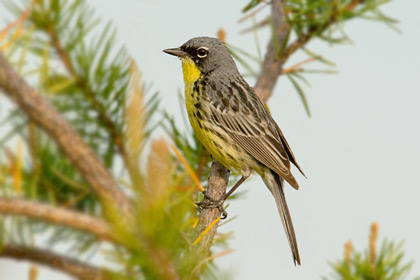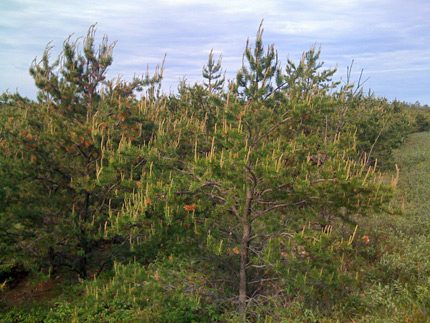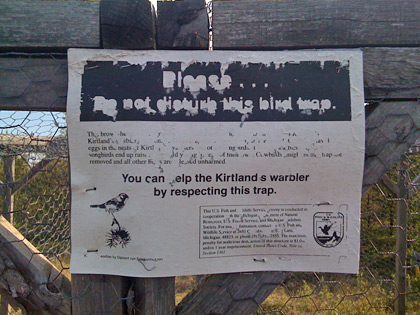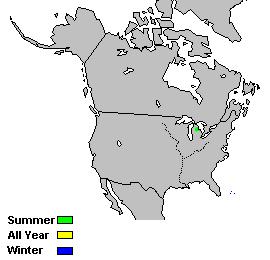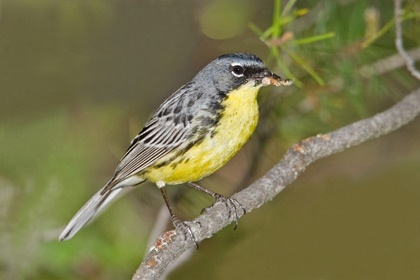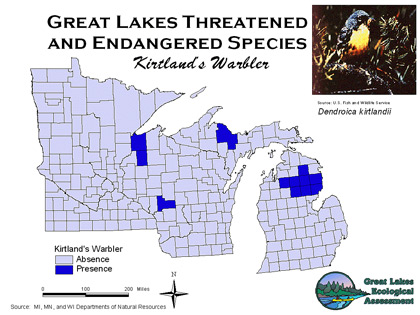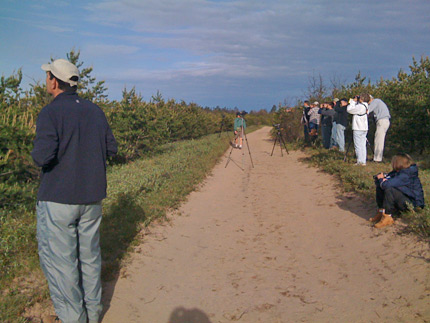I got into Detroit around 4PM last Friday and immediately embarked on my 3.5 hour drive up to Grayling, MI in the Northern part of Michigan’s Lower Peninsula. Since the sun doesn’t set until well after 9PM at these latitudes I decided to check out some known nesting locations for Kirtland’s Warbler around Mio. I didn’t have much luck but I did get some nice photos of Common Nighthawks flying around.
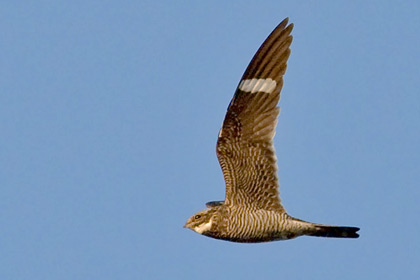
Common Nighthawk
Saturday morning I took the Kirtland’s Warbler tour out of Grayling (offered by the US Fish and Wildlife Service). You can read more about the Kirtland’s Warbler tour here.
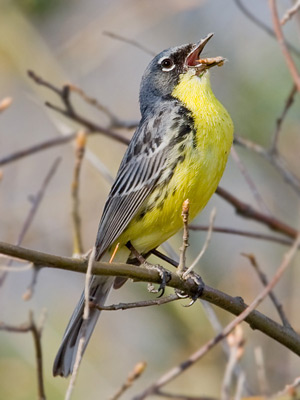
Kirtland’s Warbler
Since it was still relatively early in the day when the tour ended I decided to check out some spots for Upland Sandpiper and other nesting specialties in
Michigan’s Lower Peninsula. I never did locate any Uplands but had a nice adult Bald Eagle fly over me as I was driving down the highway. I also found a Brown Thrasher that was presumably bringing food to recently hatched chicks.
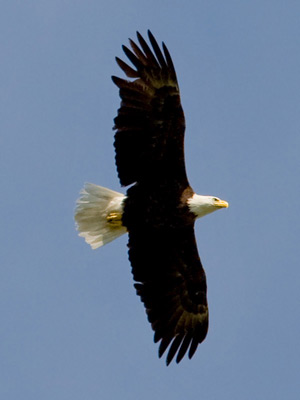
Bald Eagle
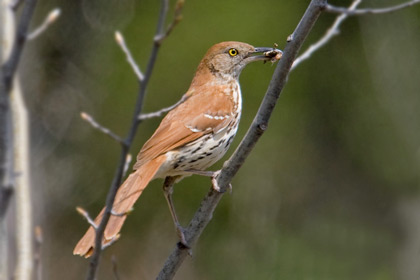
Brown Thrasher
I encountered a few other areas that were designated as Kirtland’s Warbler nesting locations but I never heard or saw any. Being mid-day probably contributed to lack of any noticeable activity. Between the abundance of Jack Pine stands were large parcels cleared for local oil drilling. These areas supposedly had nesting Upland Sandpipers but I never did find any.
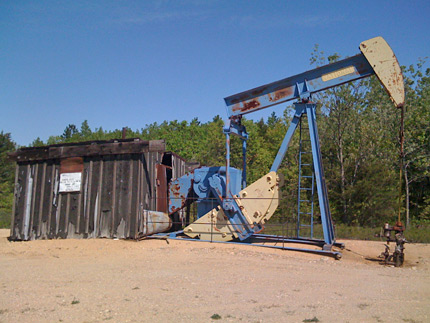
Oil Rig
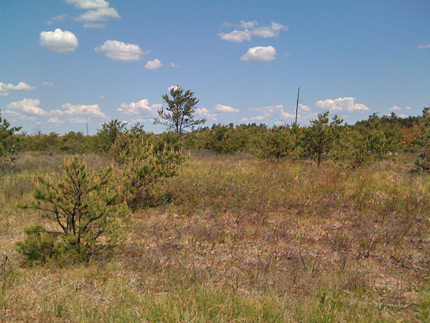
Kirtland’s Warbler Jack Pine Habitat
I decided to throw in the towel on the Upland Sandpiper for the time being and head over to Rifle Recreation Area which was just East of Rose City. The area was primarily a migrant hotspot but they claimed to have nesting Olive-sided Flycatchers. I’ve been trying to get better photos of them for a while with no luck and today was no different. The park did offer some great scenery though.

Rifle Recreation Area
I took a quick nap in the car because I was working off a few hours sleep over the past few days – not going to bed until close to midnight and waking up (essentially) 2AM Pacific Time catches up with you. I decided one last futile attempt for Upland Sandpiper by checking out areas of Amish farmland north of Mio. It was pretty overcast and drizzled off and on but that didn’t matter much since I never found any Uplands. I did encounter a few displaying male Bobolinks along the sides of the roads.

Amish Horse Carriage
That afternoon I met up with some friends from Houston, TX. They had spent the past few days in the UP (Upper Peninsula) and had spectacular luck in finding Connecticut Warbler, Black-backed Woodpecker, Ruffed and Spruce Grouse and many other great birds. I just wish I was able to fly up mid-week to bird with them up there!
Since I didn’t get to meet up with them until late afternoon I decided to take them back to the Kirtland’s Warbler spot where I had photographed the male earlier that day. For the most part the weather was sunny and I was able to get a few more nice shots before the storm clouds started rolling in close to dusk.
On Sunday, we decided to work our way back down the “coast” toward Detroit since my flight was at 7:30PM that evening. Checked a few local hotspots for nesting Black Terns, Yellow Rails and Sedge Wrens. Unfortunately we started a bit late so we never heard any Yellow Rails calling. We did find nesting Swamp Sparrows and lots of calling Sedge Wrens (that didn’t seem to want to come out of the reeds).
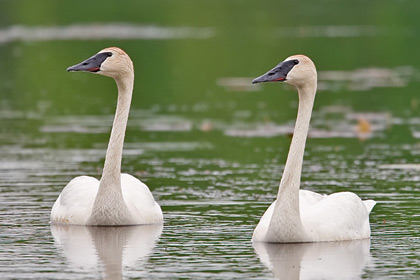
Trumpeter Swan
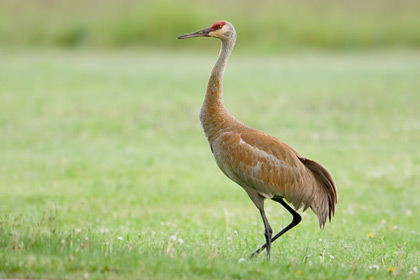
Sandhill Crane
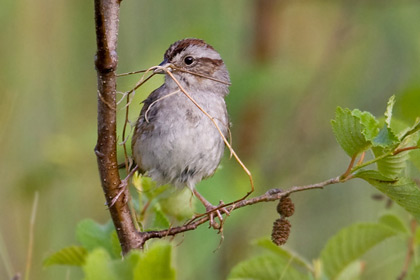
Swamp Sparrow
We also checked a local hotspot for nesting Northern Goshawk, Yellow-throated Vireos, Red-headed Woodpeckers and many other Eastern passerines. We heard many Red-headed Woodpeckers calling in the area but never saw any. An over abundance of Red-eyed Vireos, Warbling Vireos and a single Yellow-throated Vireo. A Scarlet Tanager was also calling in full song nearby. We even spooked a Badger that was foraging in the leaves.
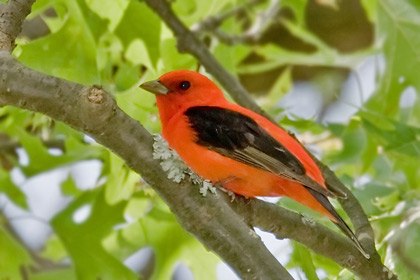
Scarlet Tanager
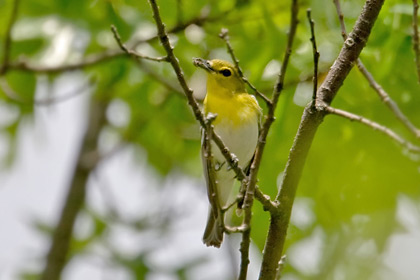
Yellow-throated Vireo
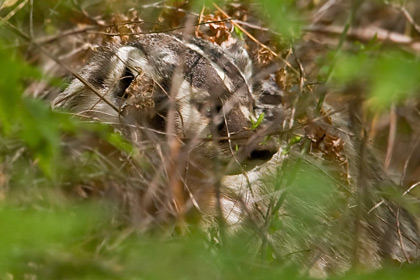
Badger
Last stop was Tawas Point (about 3 hours north of Detroit) along the coast of Lake Huron to look for Piping Plovers. I found the area where they were supposed to be nesting and there was a nice sign warning people to not enter during the nesting season months…but unfortunately there were two guys windsurfing along the beach so obviously nothing was there!!
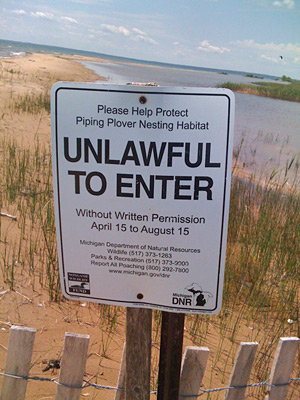
Piping Plover Nesting Area
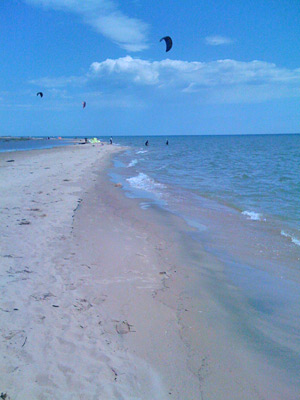
Lake Huron Coastline
There were lots of nesting Cliff Swallows in the area though. A couple of Bank Swallows flew by – too quickly to get any photos though.
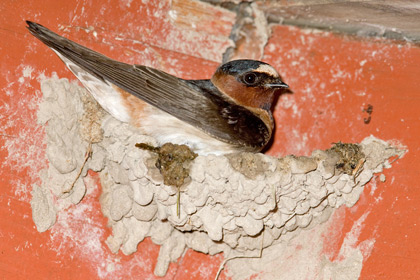
Cliff Swallow
